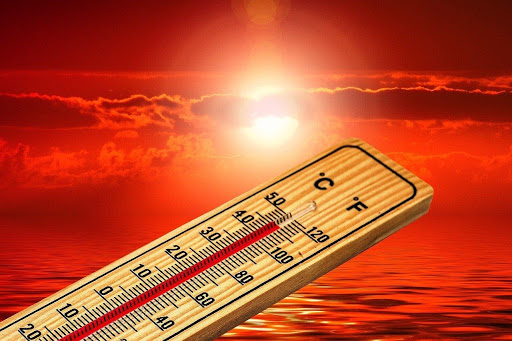

5 TIPS THIS SUMMER TO AVOID HEATSTROKE

Certain jobs demand fieldwork in the scorching heat. The warm weather, bright sun, and the blue skies are not always an excellent working environment for them at all. There are various risks associated with those who operate at extremely high temperatures outdoors.
For those who work outside for long periods, remaining fresh and healthy during the summertime can be quite difficult. Hundreds of employees get sick every year, and thousands of them die while operating in severely humid or heat environments. If you are exposed to extreme heat at work, you need to be aware of all the potential hazards you may face, such as heat stroke, heat exhaustion, heat stress, and various other health issues such as cramps, weakness, vomiting, nausea, rapid heartbeat, sweaty skin, headache, dizziness, and more.
What is heatstroke, and what causes it?
Heatstroke occurs only when your body is no longer in a position to control its temperature, leading to brain damage and other internal organ problems. Heat strokes are a medical emergency where care should be provided immediately to prevent permanent disability and, in some cases, even the death of the patient. Heatstroke is one of the most serious and common health hazards for people who work outdoors.
Hence this condition is called heat stroke when the body loses its ability to cool off itself. Our body should have a standard temperature of around 98.6 ° F. The responsibility for the heatstroke lies with various external and internal factors.
Through the cycle of metabolism, we generate our internal heat for the body. Metabolism helps turn the nutrients into energy in our bodies. Another form of heat production results from exercise or muscle activity. The blood rushes into the muscles during exercise, which heightens the body's core temperature and produces heat in the extremities.
During these cases, sweat is the body's natural response to the rise in temperature. By suddenness, our body naturally cools down. If the temperature is too high, however, our body loses control to cool itself naturally and begins to suffer from various heart-related diseases such as heat stroke.
Let's take a look at some of the most realistic tips this summer to prevent a heat stroke
Dress Appropriately:
Beating the scorching heat of summer can be difficult, but with proper dress code, it is not impossible. It is best to keep the body temperature to a minimum level, so light-colored, lightweight clothes are perfect summer clothing. Shorts and tank tops also allow airflow inside your clothing.
Nonetheless, if you operate in close proximity to an enclosed heat-generating area, wear unique protective clothing such as flame-resistant or FR clothing. You may find it a little difficult to do your job when wearing FR clothes, but it will certainly shield you against the harmful effects of outside weather. New FR clothing is light in weight, making the wear more breathable.
Stay hydrated:
Two forms of heat exhaustion are primarily salt depletion and water depletion. Dehydrationcan cause serious health problems, such as heat stroke. To avoid such situations, you should drink water every 15 to 30 minutes, even if you are not thirsty. In addition, you should also avoid drinks that contain high amounts of sugar or caffeine.
For athletes, the Chief Cardiac Surgeon of Apollo Speciality Hospitals, Dr. Sridhar V, states that "when we exercise and feel thirsty, we usually drink water, but it contains no minerals and does not replace the loss of salts due to sweating.” Even excess water intake can cause hyponatremia which leads to disorientation.
Avoid overexertion:
Always keep in mind that our body is working hard enough already to cool itself down. Hence, we need to avoid overexertion. Taking frequent breaks will not only limit our exposure to the sun, but it would also provide our body with some time to take rest. This is particularly important in case you already have any pre-existing conditions such as high blood pressure.
Identify the symptoms:
Identifying symptoms is the significant journey everybody has to go through. There are various symptoms such as heat cramps, heat rash, dizziness, fainting, dehydration, and more, which indicate that you may be suffering from a heat stroke or lead to a heat stroke condition. Whenever you are aware of any of these symptoms you will call for medical assistance immediately
Beware of medical reactions:
Certain medications can even increase the risk of developing problems with heat exposure. In addition, some medicines may also interfere with the process of perspiration or favors the elimination of water resulting in an imbalance to control and sustain the body temperature. Before buying any medication, ask your pharmacist about these things.
Wrapping Up
In summer days, if you are working outdoors or traveling a lot, sunstroke or heat stroke is pretty standard. Even though our body can cool itself down, it may struggle to sustain the temperature when it reaches extreme conditions. This can result in a heatstroke that can cause serious health problems or even death. There are however a few simple ways, such as staying hydrated and wearing suitable clothes that can help us protect ourselves from the sun's scorching heat.
Related blog: Ways for kids to stay active in the summer














